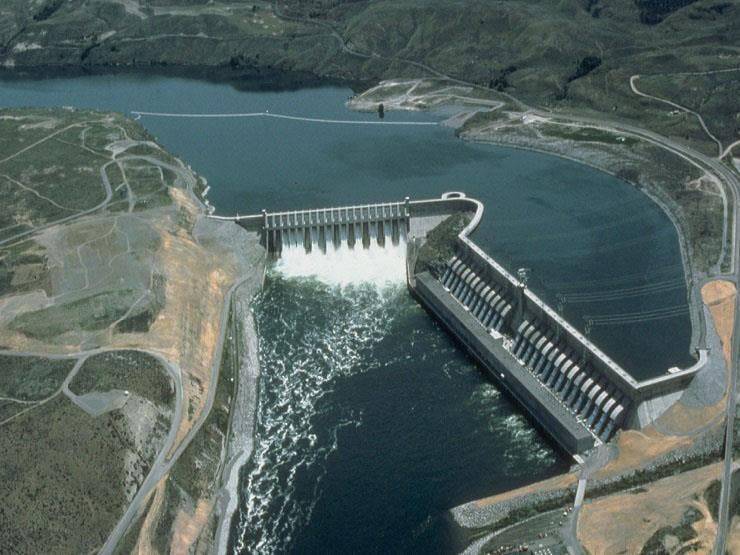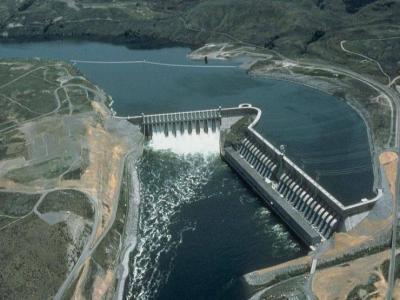Ethiopia began the process of generating power from the Grand Renaissance Dam, established on the Blue Nile, today, Sunday, according to government officials, marking a significant turning point for the controversial project. A correspondent from "Al Arabiya" and "Al Hadath" reported that Ethiopian Prime Minister Abiy Ahmed inaugurated the first phase of electricity generation from the dam today, in an event attended by numerous officials, parliamentarians, community leaders, and religious figures, to unveil one turbine out of a total of 13 with a capacity of 350 megawatts. Abiy Ahmed, along with senior officials, toured the power station and pressed a series of buttons on an electronic screen, a step that officials said initiated the production process.
Since 2011, Egypt, Sudan, and Ethiopia have been negotiating to reach an agreement on the dam's filling and operation, but long rounds of negotiations among the three countries have so far failed to yield a deal.
### Regional Dispute at the Heart of the Issue
The dam, expected to be the largest hydropower project in Africa, has been at the heart of a regional dispute since Ethiopia launched the project in 2011. Egypt and Sudan, the downstream countries, fear the dam’s implications on their water security, while Addis Ababa emphasizes its significance for electricity generation and development. No comments have yet been issued from Cairo or Khartoum, which have been demanding Ethiopia sign a legally binding agreement regarding the filling and operation of the dam since construction began.
### Numerous Rounds of Talks
The three governments have engaged in several rounds of talks that have not yet indicated any breakthrough. The project, valued at $4.2 billion, aims to produce more than 5,000 megawatts of electricity, double Ethiopia's current electricity production. Initially, Ethiopia planned to generate around 6,500 megawatts before reducing its target.
### Existential Threat
It is noteworthy that the Grand Renaissance Dam is located on the Blue Nile in the Benishangul-Gumuz region, about 30 km from the Sudanese border. It measures 1.8 km in length and stands 145 meters high. The Blue Nile, which flows from Ethiopia, meets the White Nile in Khartoum to form the Nile River that traverses Sudan and Egypt and flows into the Mediterranean Sea. For Egypt, which relies on the Nile for about 97% of its irrigation and drinking water needs, the dam poses an existential threat. Sudan hopes the project will help regulate annual floods but fears it could damage its own dams in the absence of a framework agreement regarding the Grand Renaissance Dam's operations.
### Failure of Talks
Talks mediated by the African Union have yet to achieve a trilateral agreement on the dam's filling and operation. Cairo and Khartoum have demanded that Addis Ababa halt filling the dam's reservoir until a deal is reached. However, Ethiopian officials consider the filling of the dam a natural phase of the construction process that cannot be halted. The Security Council discussed the project preliminarily in July; however, Ethiopia, which has consistently opposed the issue being addressed in the Security Council, regarded the Council's statement as an "unhelpful" deviation from the African Union-led process. In September, the Security Council adopted a statement recommending that Egypt, Ethiopia, and Sudan resume negotiations under the auspices of the African Union.
### "Historical Right"
Egypt insists on its "historical right" to Nile waters enshrined in a series of agreements since 1929. At that time, Egypt gained veto power over any projects built on the river. In 1959, through an agreement with Khartoum regarding the distribution of Nile waters, Egypt secured a 66% share of the river’s annual flow, while Sudan received 22%. The massive dam's reservoir filling phase began in 2020, and Ethiopia announced in July of that year that it had reached its target of 4.9 billion cubic meters. The reservoir's total capacity is 74 billion cubic meters, with a target of adding 13.5 billion in 2021. Last July, Ethiopia announced that it had achieved that goal, meaning it had enough water to begin power generation, although some experts have expressed doubts about this.




